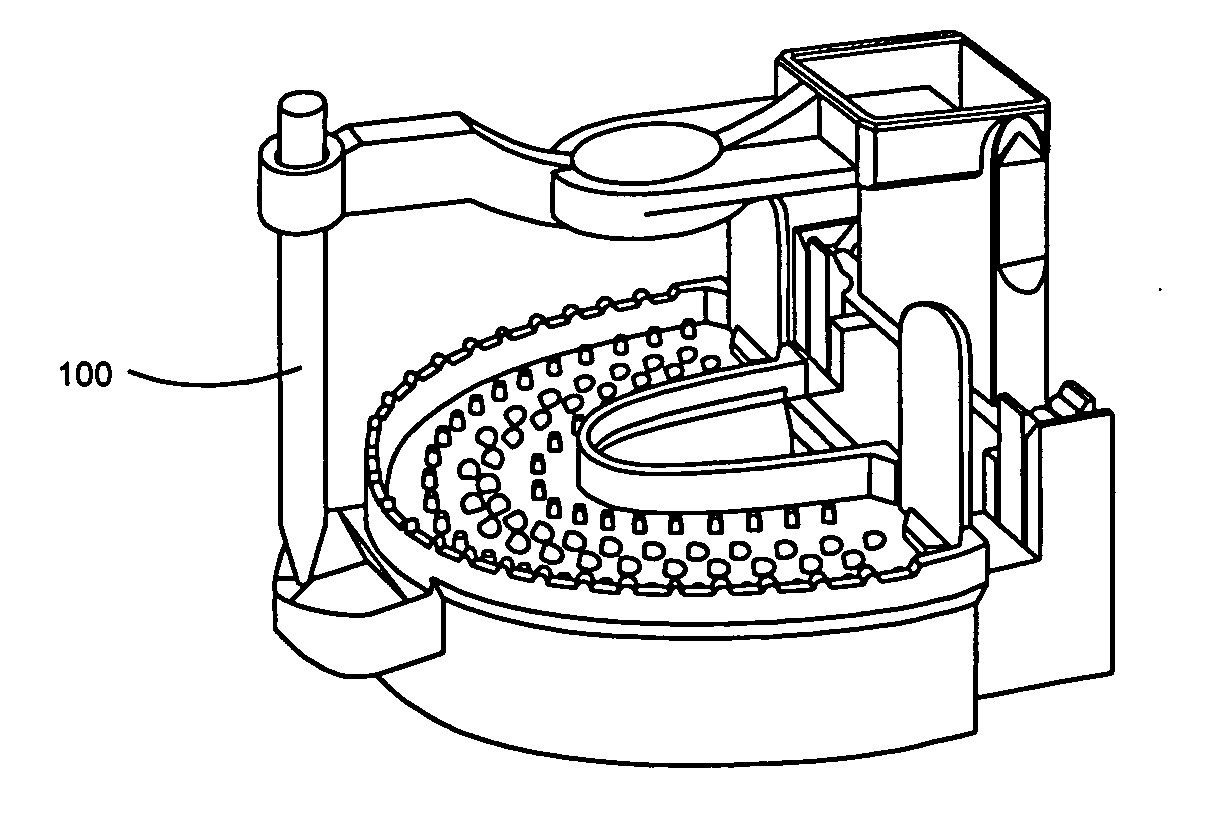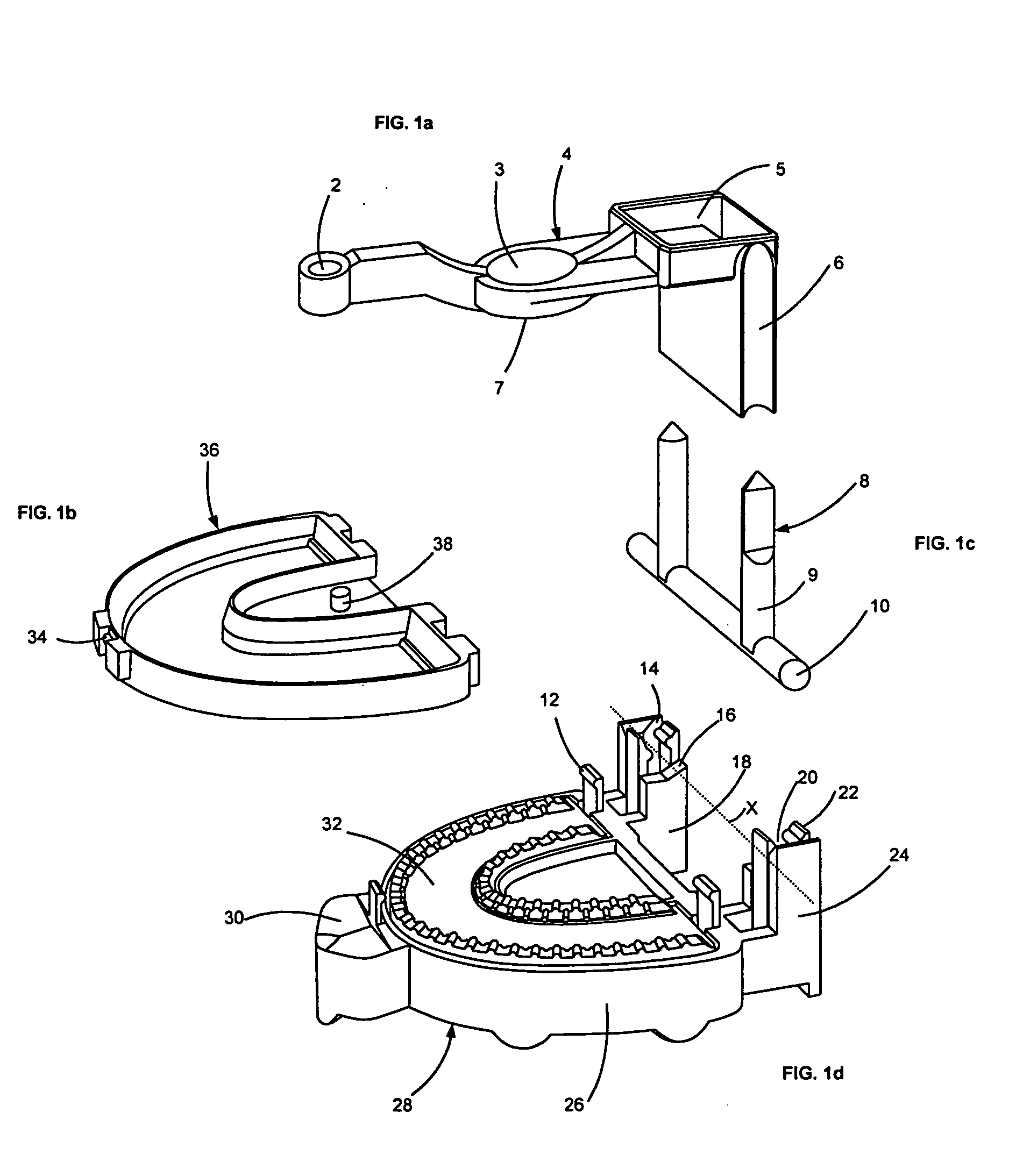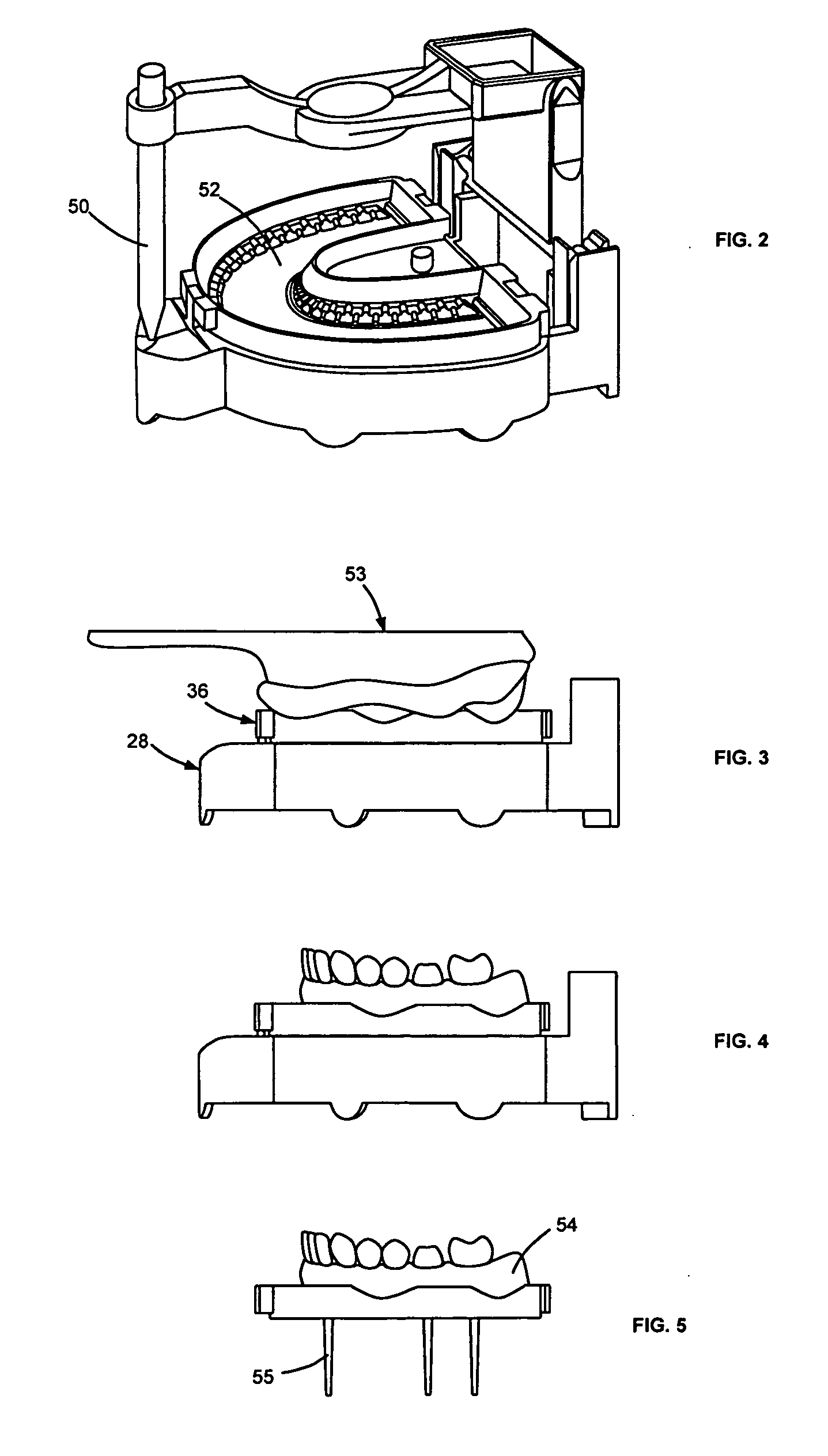Dental model articulator
a model and articulator technology, applied in the field of dental prosthetics, can solve the problems of inability to put the opposing side first, and achieve the effect of convenient, inexpensive and disposabl
- Summary
- Abstract
- Description
- Claims
- Application Information
AI Technical Summary
Benefits of technology
Problems solved by technology
Method used
Image
Examples
Embodiment Construction
[0076] As used herein, the term ‘occlusal movement’ shall refer generally to movement of the model which brings the opposing surfaces of the teeth of the two jaws into contact from a spread-apart position, whereas the term ‘occlusion’ refers to the position of the teeth when the opposing surfaces of the teeth are in contact with one another in proper position for bite registry. The term ‘masticatory movement’ shall refer generally to a motion which is the combination of vertical, horizontal and / or side-to-side movement of the teeth and jaws such as occurs when chewing with at least a portion of the upper teeth in contact with at least a portion of the lower teeth.
[0077] Referring jointly to FIGS. 1a, 1b, 1c and 1d, the full arch articulator with a removable wall but without a tray positioning plate consists of four parts—lower part 28 (FIG. 1d), upper part 4 (FIG. 1a), middle part 36 (FIG. 1b), and rear part 8 (FIG. 1c). The upper part 4 and the lower part 28 are indirectly connect...
PUM
 Login to View More
Login to View More Abstract
Description
Claims
Application Information
 Login to View More
Login to View More - R&D
- Intellectual Property
- Life Sciences
- Materials
- Tech Scout
- Unparalleled Data Quality
- Higher Quality Content
- 60% Fewer Hallucinations
Browse by: Latest US Patents, China's latest patents, Technical Efficacy Thesaurus, Application Domain, Technology Topic, Popular Technical Reports.
© 2025 PatSnap. All rights reserved.Legal|Privacy policy|Modern Slavery Act Transparency Statement|Sitemap|About US| Contact US: help@patsnap.com



